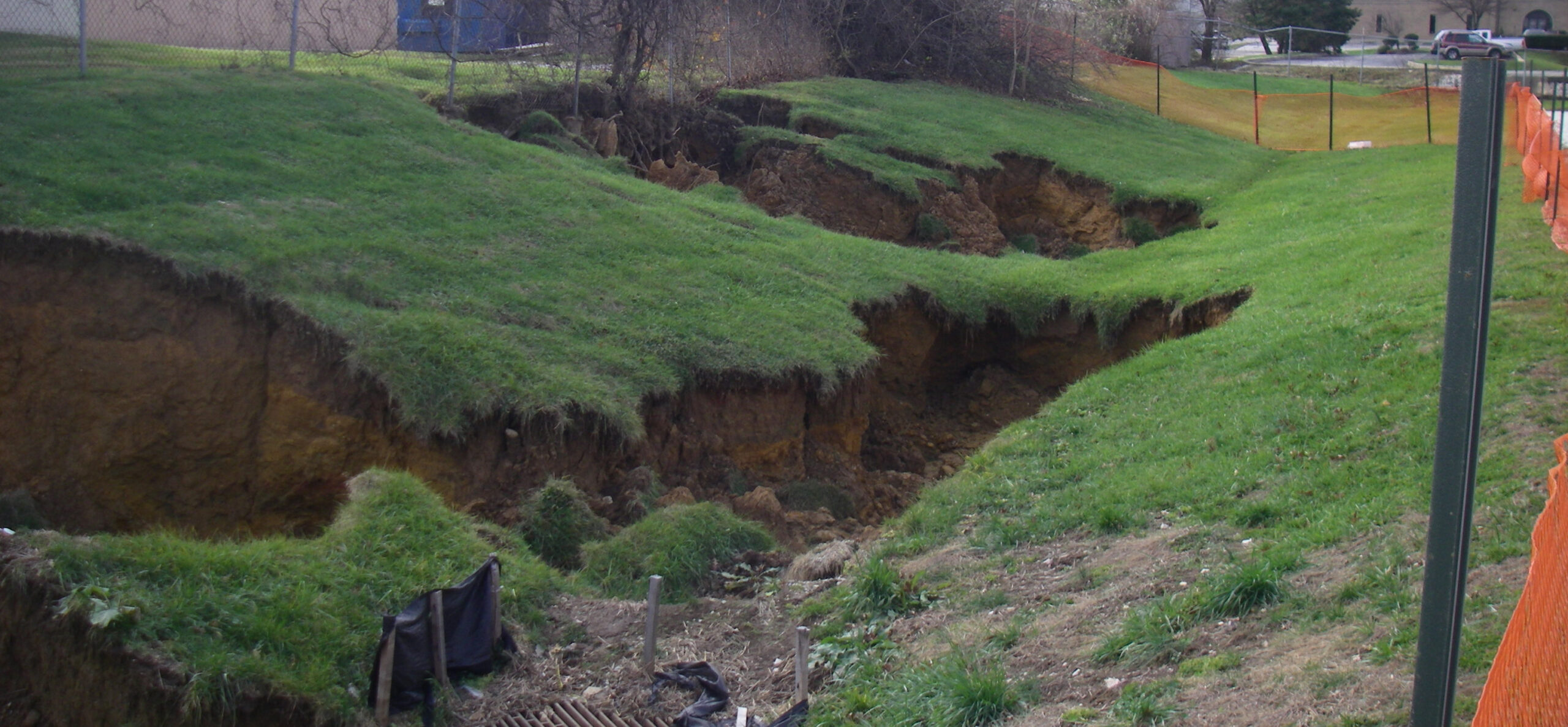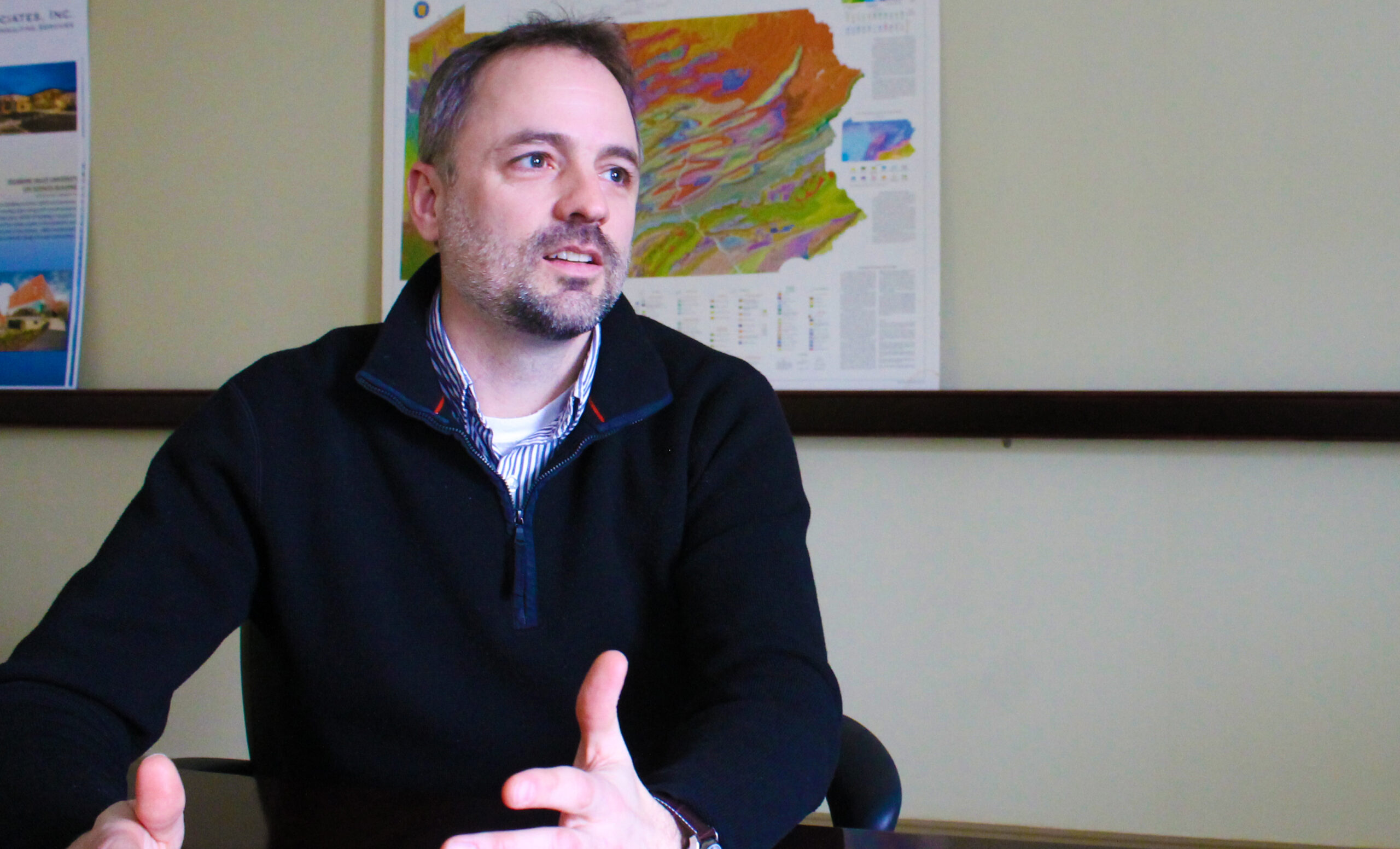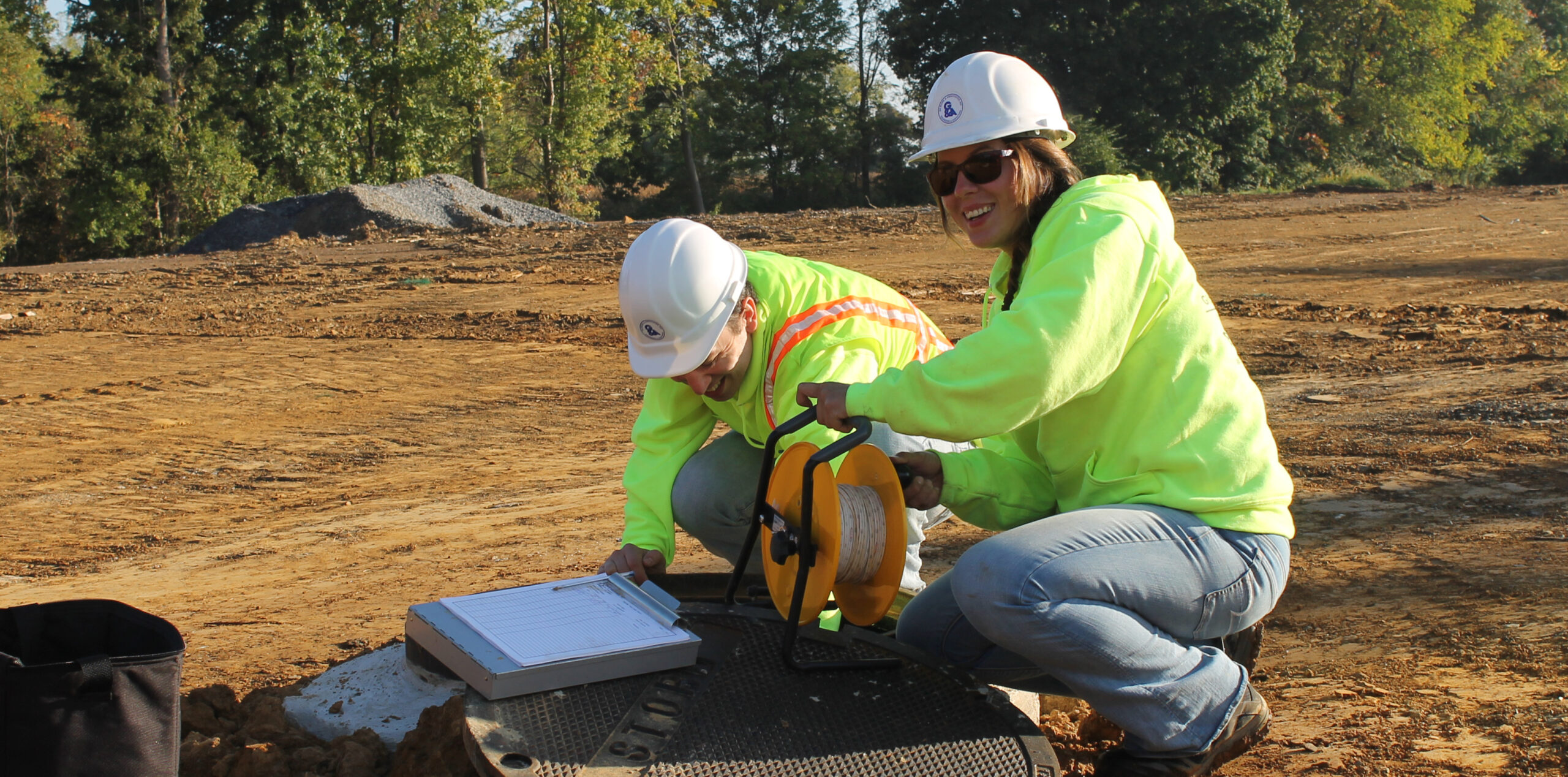A discussion with Trevor Woodward, P.G., Engineering Geologist
Stormwater management in sinkhole prone areas presents significant challenges for design and development projects.
Sinkholes are found in carbonate bedrock that can dissolve over geologic time. As water moves through cavities and openings in the bedrock, soil migrates downward into the openings causing subsidence and collapse of the ground surface. These environments are often described as having karst topography. Changes to runoff rates, volumes, and patterns can accelerate sinkhole development in karst topography. The task of repairing sinkholes can be expensive and cumbersome to clients.
G&A specialists were contacted when large scale sinkhole activity was impacting an area supporting high risk infrastructure. Following stabilization procedures, G&A engineers and geologists identified the source of instability as stormwater discharge from a nearby detention basin. Working with multiple property owners, G&A investigated and designed a well recharge system to restore hydrologic balance and surface stability.
“Historically, stormwater management in areas with karst topography, such as Lehigh Valley, Pennsylvania, has been a challenge for property owners and engineers.” Trevor Woodward, P.G., Geotechnical Services Manager at G&A.
“Traditional lined detention basins intended to prevent stormwater from interacting with the carbonate geology can actually destabilize the soil overburden and contribute to sinkhole failures. In addition, there is not always sufficient property space or vertical clearance from bedrock to utilize best practices for shallow infiltration. In an effort to restore the hydrologic balance for this project and minimize the risk of continued subsidence activity, an alternate means of safely managing stormwater was proposed.”
An initial study and well test were conducted to verify that the carbonate aquifer had adequate capacity for the well recharge application. G&A coordinated with regional regulatory agencies and designed and permitted a nine-well gravity drain field (also known as Class V injection wells). The system was designed with a modified basin outlet structure and robust water quality controls to safely distribute the stormwater across the well network. During this phase, inflow rates were customized to the performance of each well.
“If properly investigated and engineered, stormwater runoff can be recharged directly into the underlying aquifer. This progressive approach bypasses the sensitive soil-bedrock interface and mimics the predevelopment karst hydrology.”
During construction, each well was individually tested following drilling to develop final design inflow rates. Following construction, G&A hydrogeologists conducted a system-wide inflow test to verify performance. Data collected during the test was analyzed to confirm the as-built capacity of the system and the aquifer response to a 100 year storm recharge event, over 250 gallons per minute. The system test results demonstrated successful post construction function of the well field.
Throughout the first year of operation, G&A scientists performed continuous water level monitoring and quarterly groundwater sampling. Pressure transducer data, manual water level readings, and water quality samples were collected and analyzed. At years end, a second system wide inflow test was conducted to confirm ongoing performance function.
Woodward concluded, “This information contributed to a sophisticated understanding of the aquifer and well system, and promoted fine tuning to optimize performance. While not appropriate for every project, gravity drainage wells can be an excellent option for projects in challenging geologic locations, and can enhance our ability to deliver effective and resilient stormwater management systems.”
Trevor Woodward, P.G., Engineering Geologist with Gilmore & Associates, Inc. twoodward@gilmore-assoc.com




